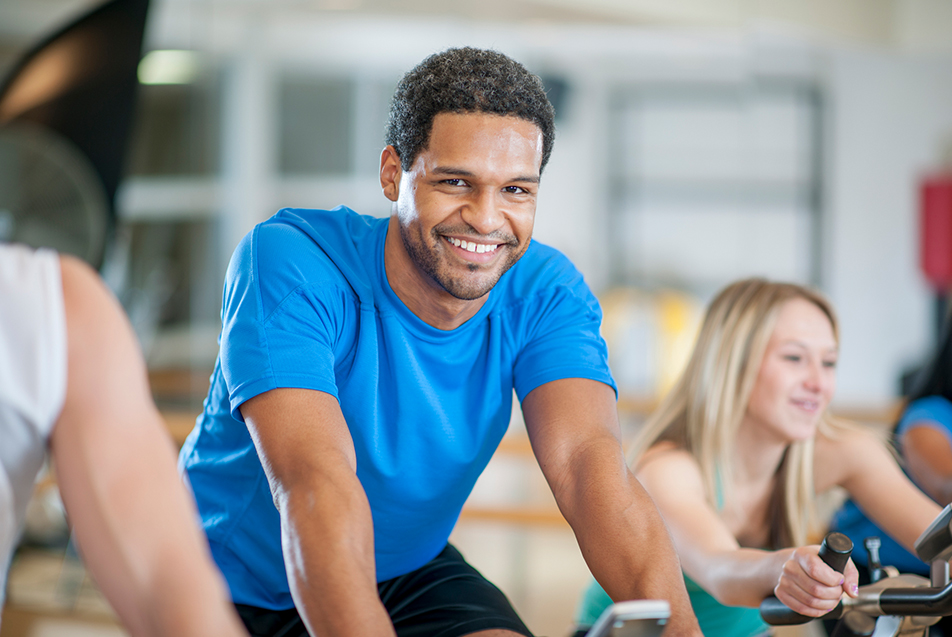
Several health clubs and gyms in the area offer spinning classes to the public. These group fitness opportunities attract everyone from veteran road riders seeking performance improvement to first timers looking to focus on their overall health. We asked Mackenzie Clark, performance specialist, Parkview Sports Medicine, to explain the pros and cons of pushing the pedals and what participants can expect from the class.
What is spinning?
Spinning or cycling is a cardiovascular endurance class for all ages and fitness levels. Whether you are new to fitness or an elite athlete, spinning can be a great fit. Spin classes are great for endurance athletes (those training for a marathon or half-marathon), who need to cross-train or those coming back from a lower extremity injury like shin splints. Spinning is also great for the joints because it’s a low impact activity.
Climbing into the saddle
For your first spin class, arrive early and introduce yourself to the instructor. Let him or her know your fitness level and that you are new to spinning. The instructor will help you adjust your seat and handlebars to your fitness level and height. Also, bring a water bottle and a towel. While some choose to use special clip-in shoes for spinning, you do not need them to participate in most classes. Most bikes have a cage on the pedals where you can secure your shoes. Lastly, if you have bike shorts, wear them. The spin bike seats are not made for a comfortable stroll around the park.
The benefits of the bike
One of the best things about spinning is that you can make the workout your own. The instructor will guide you through sprints, hills, intervals or flat roads by adjusting the resistance, speed and position on the bike. If you ever need a break, you can always sit down and recover by pedaling at an easier pace or resistance.
Making room for recovery
After you have completed your first spin class, you will need to recover. Your bottom may be sore for the next several days. Again, the seat is not made for comfort. As you continue to attend classes, your body (and bottom) will get accustomed to the seat and the workouts.
Spinning is a great lower body and cardiovascular workout, consequently, this may result in muscle soreness. Remember to stretch after the class as well as the next day. Stretching your hamstrings, quads, calves and glutes is going to combat some of the soreness. Lastly, if you have a foam roller, use it along your lower body targeting those same muscle groups.